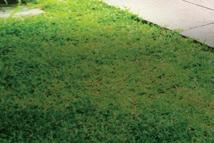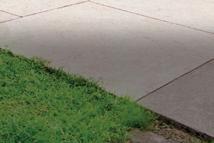


























Dear Passengers,
Welcome aboard and thank you for choosing Lao Airlines.

As we reach the end of 2022 and enter 2023, we look back on the challenges, opportunities, and successes over the last year. We are pleased to announce that Lao Airlines has resumed international service between Luang Prabang and Hanoi, Chiang Mai, Siem Reap, and Bangkok. This is a sign of our confidence that tourism in Laos is on the path to recovery in the year ahead.
Lao Airlines reaffirms our commitment to passenger safety and providing the best service whenever you fly on Laos’ national carrier.
On behalf of the board of directors and all of the staff of Lao Airlines, thank you for choosing us, as we operate with international standards, and we are committed to serving you.
Safe travels.
With highest respect,
Khamla Phommavanh
Managing Director & CEO of Lao Airlines













Hello readers,
Welcome to the November-December issue of Champa Meuanglao.
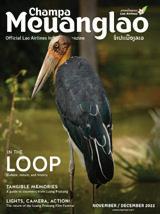
In this issue, we explore a unique region in Savannakhet Province where you can encounter animals, culture, and history living side-by-side.
The Luang Prabang Film Festival is back after a few years of dark screens. Enjoy interesting films from Laos and beyond at one of the region’s premier film festivals.
While you are up there, don’t forget to stock up on unique souvenirs to take home. Enjoy our handy guide to some of the province’s most ubiquitous offerings.
What is Chef Sitthisone’s secret to his recent award-winning plant-based dish? You’ll have to taste it to believe it.
We also focus on Lao Airlines’ well-trained mechanics who maximize the fleet’s safety.
Responsible tourism is vital in preserving the important elements that make visiting this country so special. Do your part to keep Laos simply beautiful.
Happy Reading!
The Champa Meuanglao Publishing Team
In light of the current Covid-19 situation throughout the world, please be aware that certain activities, festivals, sites, businesses, and events mentioned in this magazine may not be open and operating as planned. Do exercise good judgment, maintain safety precautions, and follow the directions of Lao authorities at all times.
Khamla Phommavanh
Managing Director
Saleum Tayarath
Deputy Managing Director of Commercial and Marketing, ICT
Sitthideth Douangsiththy
Deputy Managing Director of Ground Handling and Cargo
Paithoun Khounsouvanh
Deputy Managing Director of Technical and Flight Operation
Headquarters Wattay International Airport Vientiane Capital, Laos Tel: (856-21) 513243-46, Fax: (856-21) 513247 www.laoairlines.com
Follow the official Facebook Page at www.facebook.com/laoairlines to get the latest news and updates from the national carrier of Laos.
DISCLAIMER
Editor In Chief Editors Managing Editor Contributing Editors Creative Director Contributing Writers
Head Photographer Contributing Photographer
COVER IMAGE
A lesser adjutant stork at the stilted library in Ban Nong Lam Chan, Xe Champhone Photo: Phoonsab Thevongsa
Jason Rolan Cameron Darke Aditta Kittikhoun Duangtavanh Oudomchith Endy Khamsing Monlady Souliyavongsa Nouthaphone Simmvong
Jochen Moravek Amrita Paul Anita Preston James Tennent
Phoonsab Thevongsa Anousith Bounyong sales@rdkgroup.la (856-20) 59596621
134 Samsenthai Road, Xiengyeun Village, Chanthabouly District, Vientiane Capital, Laos (856-20) 55731717 info@rdkgroup.la
Champa Meuanglao is published bi-monthly for Lao Airlines State Enterprise by RDK Group. The views and opinions expressed or implied in Champa Meuanglao do not necessarily reflect those of Lao Airlines State Enterprise or its publishing agents. All information in Champa Meuanglao is correct at time of printing. No part of this magazine may be reproduced without the written permission of the publisher.
All rights reserved. Copyright © 2022 by Lao Airlines State Enterprise and RDK Group. www.champameuanglao.com

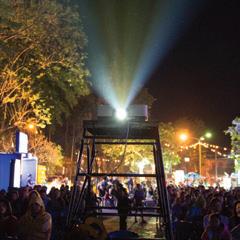
































 TEXT BY AMRITA PAUL PHOTOGRAPHS BY PHOONSAB THEVONGSA
TEXT BY AMRITA PAUL PHOTOGRAPHS BY PHOONSAB THEVONGSA

Fusing Lao tastes into stir-fried rice cooks up a win
Chef Sitthasone Phommachanh has an easy smile and a humble demeanor. Almost two weeks after winning the ‘Pick, Peel, Heal’ plant-based cooking competition at the One Health Fair at Crowne Plaza hotel in Vientiane, he still cannot believe it.
“I was quite nervous during the competition and very aware that several experienced chefs from popular restaurants were my fellow participants. I honestly didn’t think my simple dish had a shot at winning,” he tells me when we meet on a bright, sunny morning at his restaurant, Kheg Suan Sim.
The dish in question takes typical stir-fried rice and gives it a healthy and flavorful twist. The usual white rice is replaced with brown rice which is less processed and has more fiber and lower glycemic index than its counterpart. Since the dish is meatfree the vegetables and herbs really get to shine.
Chef Sitthasone’s dish has the usual suspects in fried rice like long beans and bell peppers, but the dish takes an unusual turn by combining ingredients typically used in laap (minced meat salad) like galangal, lemongrass, Kaffir lime leaf, and toasted rice powder. The dish even utilizes the surprise ingredient of the competition, turmeric, which is anti-inflammatory and an antioxidant. It blends in perfectly, making the dish more colorful and giving it a more earthy taste.
Laap is the national dish of Laos, but the word has a double meaning – luck or fortune – so Chef Sitthasone gave this dish the playful name: Fortune Fried Rice.
“A person first consumes food with their eyes, so I want to make it look as attractive as possible. I also add vegetables like bell peppers for color, string beans, and winged beans to add some crunch, more texture,” he added.
The One Health philosophy of eating and promoting organic, healthy, locally grown, and seasonal food is something Chef Sitthasone has been advocating through his cooking even before he par-

Kheg Suan Sim restaurant is located in Nong Bone Village, Vientiane fb.com/khegsuansim
Learn more about One Health principles at fb.com/onehealthlaos
left: Chef Sitthasone with his winning dish –Fortune Fried Rice
1. Preparing the dish at the cooking competition
2. Fortune Fried Rice is full of flavor and healthy ingredients

3. The interior of Kheg Suan Sim restaurant

ticipated in this competition. He informs that most ingredients, especially the herbs used in Lao cuisine are medicinal, and he constantly tries to highlight them in his food.
“I don’t even add MSG [monosodium glutamate] unless customers ask for it,” he says as I notice that the seasoning in fried rice is all but three ingredients: salt, unrefined sugar (because it is healthier than white sugar), and soy sauce.




At the competition, between the boiling and frying, the thwack of knives, and sautéing of vegetables by participants unfazed by curious onlookers, I remember observing the precision with which Chef Sitthasone worked at his station in an almost meditative state. Even though he blames his nerves for it, I was amazed at how he kept working unperturbed by the rain and wind, making next to no eye contact with those around him.
The participants were judged on markers like hygiene, presentation, taste, creativity, cooking method, and nutritional value of the dish, and Chef Sitthasone took extreme care to ensure his simple creation was both affordable and healthy. From just looking at him chopping his vegetables and lining them up on a chopping board like a painter arranging colors on his palette, one understands how much importance and respect he gives the ingredients and produce he works with. He also plates this dish with fresh greens and a wedge of lime, which not only elevates the flavor, but helps absorb iron in plant-based foods.
“I like making people happy with my food. I am grateful to win such a prestigious competition, but even more delighted that some of the judges and the EU Delegation Office in Vientiane will come to dine at my restaurant soon, I can’t wait to host them,” he exclaimed.

“I LIKE MAKING PEOPLE HAPPY WITH MY FOOD AND I AM GRATEFUL TO WIN SUCH A PRESTIGIOUS COMPETITION.”


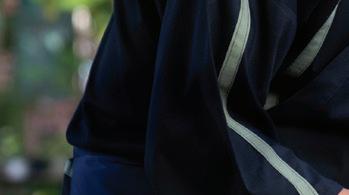


















Champhone District has a fascinating blend of culture, nature, and history
Did you know that Laos' most populous province, Savannakhet, contains a secret area of striking historic temples, giant softshell turtles, freshwater crocodiles, and even a forest full of macaques?


While all of this seems ripped from the pages of an adventure novel, you, too, can visit and explore these unique sites on the Xe Champhone Loop. And, thanks to the work of Tetraktys, a French organization committed to preserving, developing, and promoting natural and cultural sites, this area is now getting the attention it deserves.

The temple in Ban Nong Lam Chan is famous for its wooden library on stilts. The building's unique construction protects valuable palm leaf manuscripts from being eaten by insects.



left: This ancient wooden assembly hall in Ban Nong Lam Chan is a place for monks to chant and is a gathering place for the local village.

below: Huge soft shell turtles live in Nong Pa Fa and are considered sacred. Local children will shout the magic words to bring them to the surface for you to see!

The Monkey Forest is a delight for visitors. There are not many places left where you can see these macaques in their natural habitat. Do exercise caution as they are wild animals!





Wat Taleo was built in the early 1900s and follows a very French floorplan. Unfortunately, it was nearly destroyed by bombs during the Indochina War. The main sanctuary was spared, but many of the outer buildings are ruined. Look for unusual cement statuary of deities and a rhinoceros!



The interior of the sanctuary has incredible original murals in vivid colors. These paintings tell stories of local history and Buddhist fables.



right: This ancient tree near Wat Taleo is considered sacred by local people. It is also one of the largest in the area! below: The area is inhabited by the Phou Thai ethnic group, famous for their music and cotton cloth dyed with indigo.
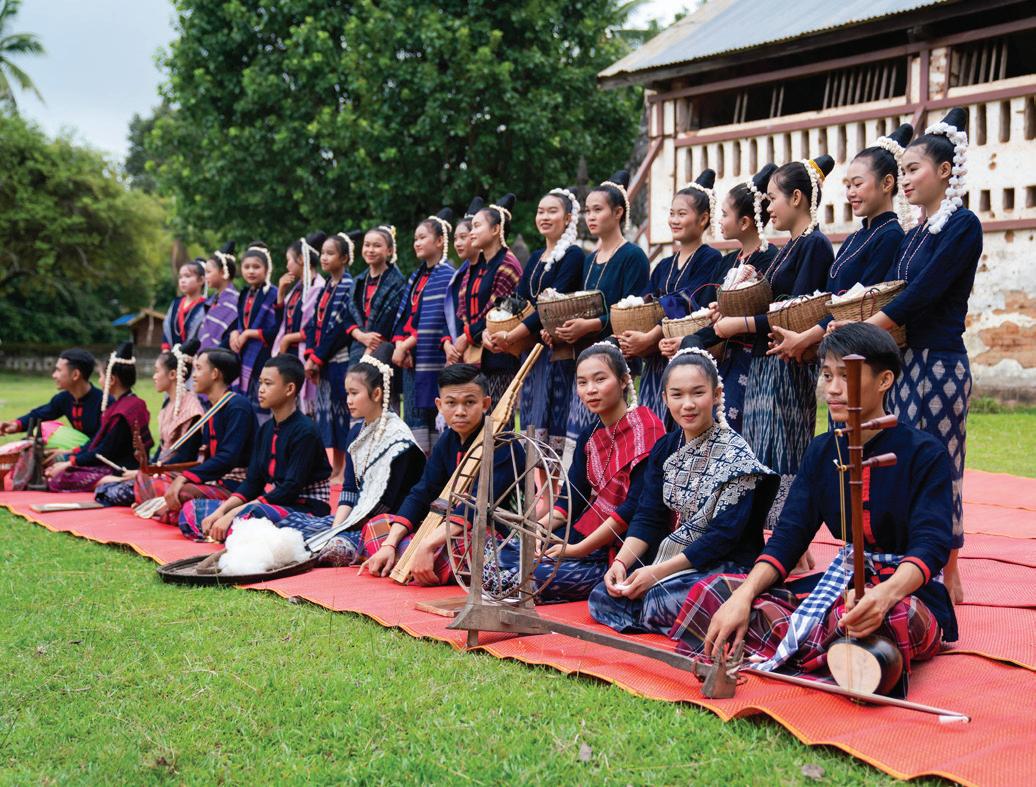

That Kou is a ruined Hindu temple built by the Khmer Empire in the early 1000s AD. Now it has been converted into a Buddhist shrine by locals.



The Nam Soui river was dammed for agricultural purposes and created this large beautiful lake. Now it is a vibrant wetland for birds, fish, and other animals all year round. People in the area enjoy floating restaurants here on the weekends.
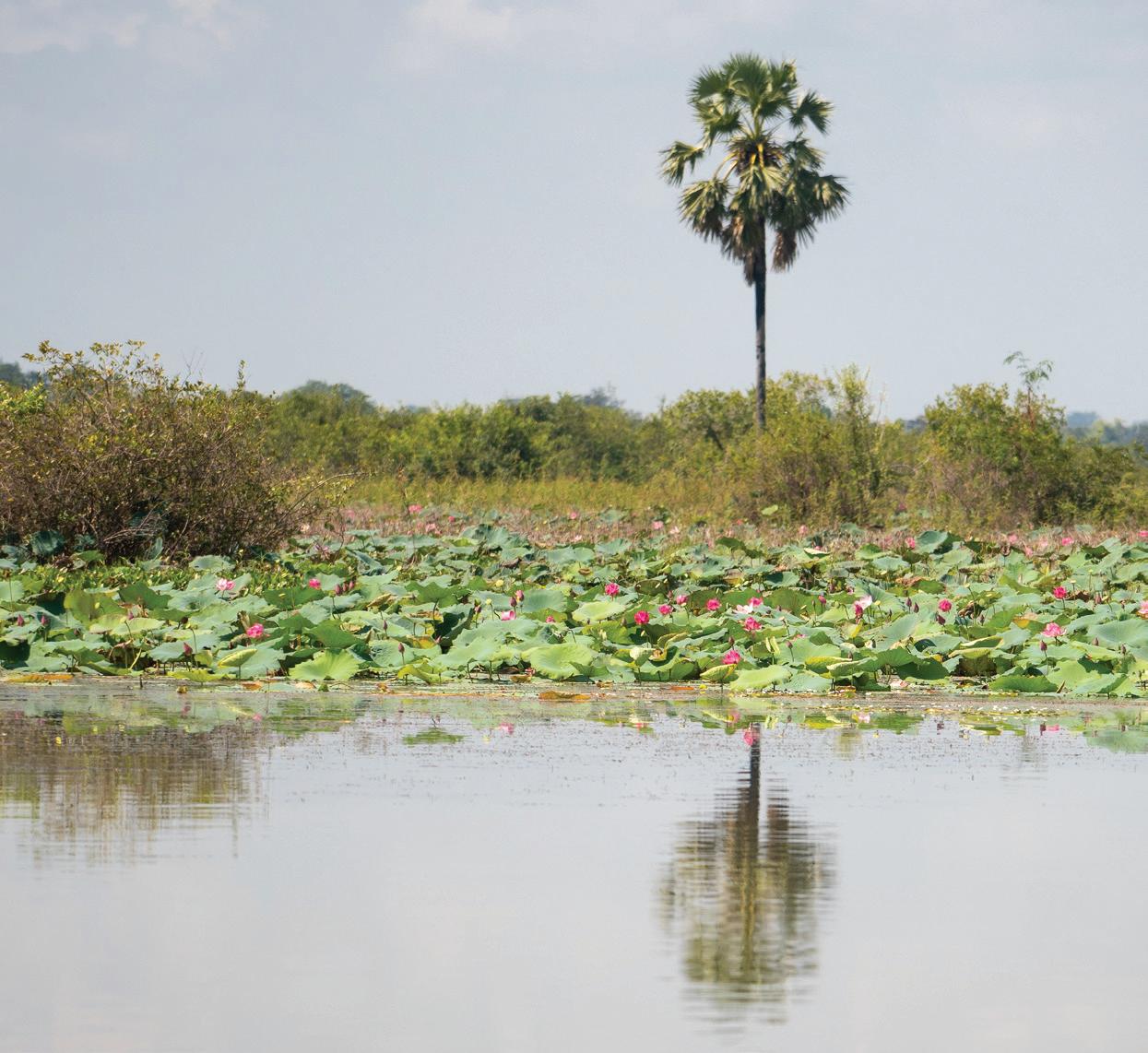







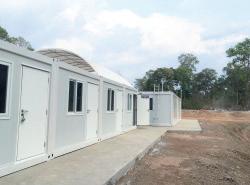






5
1. Wat Phou Khor is an unusual temple full of statues that warn visitors of the torments of Buddhist hell.

2. Some statues can be rather gory, but send a strong message.
3. This hungry ghost suffers because of misdeeds during his life.
4. Tales from Hindu mythology are depicted with this Garuda battling the Naga water serpents as a Ngeuak mermaid looks on.

5. A man's head is sawn off as punishment for violating Buddhist precepts.
The Lasting Laos campaign is implemented by the SUSTOUR Laos project, funded by the European Union. The campaign focuses on promoting certi ed sustainable businesses in the Lao tourism industry.
Observe national laws and regulations, follow the rules at religious sites.
Observe human rights and protect children from exploitation or abuse – if you see or suspect any abuse, report it immediately to local authorities.
Learn a few words in the local language, with it you can establish a meaningful contact with the local community.


Be kind with sales people. If you’re not in the mood for shopping, decline politely, or with a sense of humor.
Always ask before taking photographs of other people, especially children.















Do not engage in prostitution.
Do not engage in child sexual exploitation, or exploitation of any kind.
Do not give gifts or buy anything from children.
Do not visit schools, they are not tourist attractions.
Do not give money and gifts to begging children, support community projects instead.









Treat with respect and kindness the vendors and local artisans and promote fair trade relationships between producer and consumers.
Prefer crafts and products made locally which contributes to the economic development of family owned businesses, small retail businesses and small producers of goods and services.

Use the services of local businesses which have achieved a sustainability certification.





Engage in community-based tourism activities to support local communities.

Hire local guides, spend locally, and find out about local tipping practices.
Use different kinds of transportation (bicycle, walking tuk tuk) – the diversity of local modes of transport adds to the charm of travel!

Slow down and spend more time in less visited areas.



Do not buy products that are obviously counterfeit or prohibited by national and international regulations.

 TEXT BY JAMES TENNENT PHOTOGRAPHS BY THE LUANG PRABANG FILM
TEXT BY JAMES TENNENT PHOTOGRAPHS BY THE LUANG PRABANG FILM

The pandemic may have seemed a perfect time for movies, with hours upon hours spent inside with just a TV for company, but it wasn’t quite so easy for our film festivals. Without a physical presence, without an outside, events were forced to move into the space of Zoom talks and experimental online platforms. Thankfully, as things reopen, the festival renaissance is upon us.
For the Luang Prabang Film Festival (LPFF), Laos’ premier movie showcase, the inside days meant a move to online, with 2020’s films available on a custom-made festival website for just a few days in December that year. Then 2021 came and the lockdown was still going strong.


LPFF, which also manages the Lao Filmmaker’s Fund, decided that 2021 would be a year to develop. The festival was put on hiatus, and the focus shifted to supporting a nascent filmmaking community that could do with all the support it can get: 2020 and 2021 saw over $100,000 granted to domestic projects, 18 films of differing lengths and genres all benefiting from the fund’s generosity.
That’s all well and good. But after all that time without it, festival fans will be pleased to hear that the old royal capital and UNESCO World Heritage town will once again host an assortment of movie delights. “Coming out of the pandemic, we had to start this year from scratch,” says Sean Chadwell, LPFF executive director, adding that early support from Lao Telecom, M Money, and The Asia Foundation had made it possible.
left: The
2.
To learn more about film screenings and festival partner hotels, please visit: lpfilmfest.org
Lao Airlines has frequent flights to Luang Prabang from Bangkok, Hanoi, Chiang Mai, Siem Reap, and Vientiane.
While films from all across Southeast Asia comprise the 20+ features to be screened this year, Lao and Thai language films will be getting the spotlight in the nightly outdoor screenings at Ban Vat Sene Primary School. Films from other countries in the region, including Cambodia, Indonesia, Malaysia, Myanmar, the Philippines, Singapore, and Vietnam, will be screened indoors at Sofitel Luang Prabang. In keeping with LPFF tradition, all screenings are free to viewers.
With the main streets of Luang Prabang slowly returning to their former hectic glory, the town happily anticipates the next big event. “The energy and enthusiasm here has been amazing. Avani+ Luang Prabang and Sofitel Luang Prabang – both longtime supporters of the festival – will both once again join us in presenting a world-class event, and partners around town are ready to welcome our international cohort of directors and industry guests back to Luang Prabang,” says Sean.
The break has also left the program team with a glut of films to choose from, not just the best of the year but the best of the last three years across the region. But, as Sean says, narrowing down a schedule from the abundance of choice is “a nice challenge to face.”
Known as the only international film festival in a town without a working cinema, LPFF will commence on the evening of December 8th and continue for 3 days. All you will need to enjoy screenings, discussions, and filmmaker Q&A sessions is a sweater for the dry, cool December nights.
Visitors to Luang Prabang are also welcome to visit the LPFF office on the town’s main street, just next door to Wat Khili, where an on-site shop features t-shirts and mementos from prior festivals.


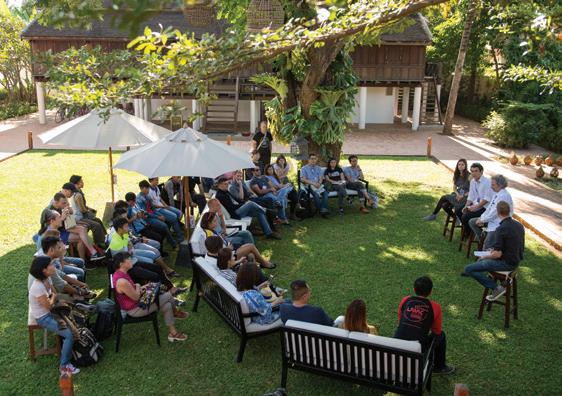

 A guide to souvenirs from Luang Prabang TEXT & PHOTOGRAPHS BY ANITA PRESTON / EVENSONG FILM
A guide to souvenirs from Luang Prabang TEXT & PHOTOGRAPHS BY ANITA PRESTON / EVENSONG FILM
Looking for souvenirs? Short on ideas of what to take back for your aunt or the neighbor feeding your cat? The mementos you bring home from Laos are great reminders of your wonderful trip. Laos, like many Asian countries, has a very rich handicraft heritage and a wealth of unique souvenirs you can’t find anywhere else in Asia. Here are our top 10 souvenirs from Luang Prabang with tips on where to find them in the former royal capital.









Laos is famous for silk, as it is entirely handmade from start to finish. Loom weaving is time and labor-intensive and the weaving of especially intricate designs can progress only a few centimeters per week. Silk is dyed using local plants and produced for use in clothing and household decor. Designs can provide clues to their background and origin, and can also tell stories. If you want something truly unique take home a Lao tube skirt, or sinh, which is easy to wear, beautifully crafted, and comfortable.
Find it at the Night Market, Ban Xang Khong, and various boutiques around town.





Literally “heavenly meat”, sin savanh, or Lao jerky, is a protein-rich snack you see stacked up in piles at the market. Savory yet sweet, chewy, and glossy, covered with sesame seeds these sun-dried buffalo strips are tasty and go down well with beer. It is always easy to squeeze a bag of Lao jerky into your suitcase for the gourmands in your life – if you don’t eat it first!


 Find it at the Night Market and Ban Xang Hai.
Find it at the Night Market or Morning Market.
Find it at the Night Market and Ban Xang Hai.
Find it at the Night Market or Morning Market.



Many of the night markets in Laos particularly Luang Prabang have a dizzying array of styles and materials from jungle vine market bags to elaborate evening bags with tribal embroidery, beadwork, tassels, pom poms, and bells. Many incorporate traditional designs and needlework. If you don’t need a large bag there are also cute zippered Hmong wallets with ethnic embroidery depicting rural scenes. These are quite reasonably priced, considering the work and detail involved.

Find them at boutiques and the Night Market.








Neighboring Vietnam with its long-held title of the best coffee in Southeast Asia is a hard act to follow in terms of producing outstanding coffee. Laos has begun to hold its own with its expanding global presence on the market. Coffee plantations set amongst the otherworldly mist and waterfall-covered Bolaven Plateau in southern Laos are rapidly helping to promote the area as becoming a new ecotourism destination and coffee shops are popping up all over the country showcasing Laos’ best beans.

How could you come to Laos and not take home a rice basket? If there ever was a symbol of Laos this is it. Sticky rice is the backbone of Lao culture and every household has several baskets. Sometimes, people even use them to store garlic, onions, or potatoes as it allows the air to circulate yet keeps out the light.
 Find it at the Night Market, cafes, and supermarkets.
Find it at the Night Market or Morning Market.
Beerlao Shirt
Find it at the Night Market
Find it at the Night Market, cafes, and supermarkets.
Find it at the Night Market or Morning Market.
Beerlao Shirt
Find it at the Night Market


Many pieces of jewelry are available which reflect traditional designs of various ethnic groups. The Hmong people are especially fond of decorating themselves in ornate and bold silver jewelry. In the past, their wealth was worn in silver and as amulets against evil spirits. You can find many items such as the lock necklace or the spirit lock pendant available at the night market. Shops on the main street have beautiful traditional silver jewelry incorporating semi-precious stones and silk.



Visitors fall in love with the tart juicy berry flavor of the buds of the hibiscus flower. Reconstitute by boiling with water and sugar to taste until you have a rich red cordial. Use as a tea or in cocktails or take advantage of its many health benefits including its powerful antioxidant and blood pressure lowering properties.
Find it at the Night Market, boutiques, or the silversmiths near Wat Houa Xieng.
Find it at the Morning Market.


This traditional paper is made from the bark of the mulberry tree, whose leaves also provide food for silkworms. Sa paper is quite versatile and can come in many forms including lanterns, journals, photo albums, and large sheets for gift wrapping. See the paper production process in Ban Xang Khong just upstream from Luang Prabang which is a lovely area to spend an afternoon off the usual tourist circuit.


Find it in Ban Xang Khong and the Night Market.
















































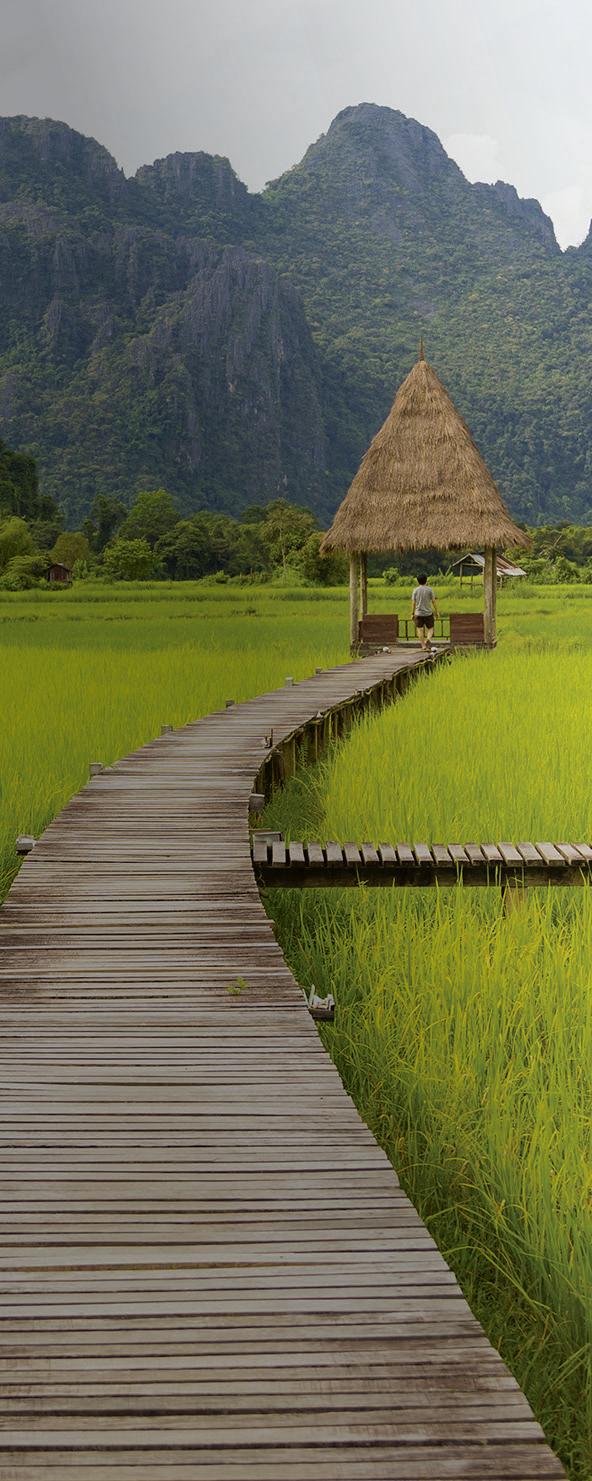
























The hangar on the tarmac behind Vientiane's Wattay Airport is a far cry from the bustle of the arrivals and departures lounges, with all of its lines of people and clattering suitcase wheels. There is a certain order and calmness to this place.
Aircraft are arranged in neat rows among high scaffolding and towering steel beams, while groups of blue-clad technicians quietly work on each plane's gaping interiors. The masses of coiled steel, knobs, lids, and wires within look bright and tidy.




aircraft maintenance is a lofty goal
Lao Airlines is able to perform crucial maintenance work on both Airbus A320 and ATR aircraft, all on its own. This is all part of Lao Airlines’ effort to improve the capacity of its engineers under certification from the European Aviation Safety Agency.

Today, I am witnessing a C check, which is a heavy check. It is performed at different intervals depending on the aircraft. ATR should undergo this every 5000 flight hours, and Airbus A320 should get one every 7500 flight hours or 24 months. A C check requires a detailed visual inspection and a system operational test. All of the tasks are laid out in detail in Lao Airlines’ Aircraft Maintenance Program.
One of the mechanics walks me through some of this process, “The condition of the entry door seals is one inspection that we can do visually. However, some other parts of the aircraft require closer examination and the use of specialized equipment.”
He also mentioned that the entire process is so thorough that it can take several weeks to complete. In aviation safety, there is no room for error, so Lao Airlines must ensure that every part is functioning, always. To achieve this, the mechanic added, “we must work just as hard, or even harder, than the aircraft we inspect.”

left: Engine Pylon NDT & BSI Inspection
1. & 2. Lao Airlines mechanics at work
“WE MUST WORK JUST AS HARD, OR EVEN HARDER, THAN THE AIRCRAFT WE INSPECT.”
























































